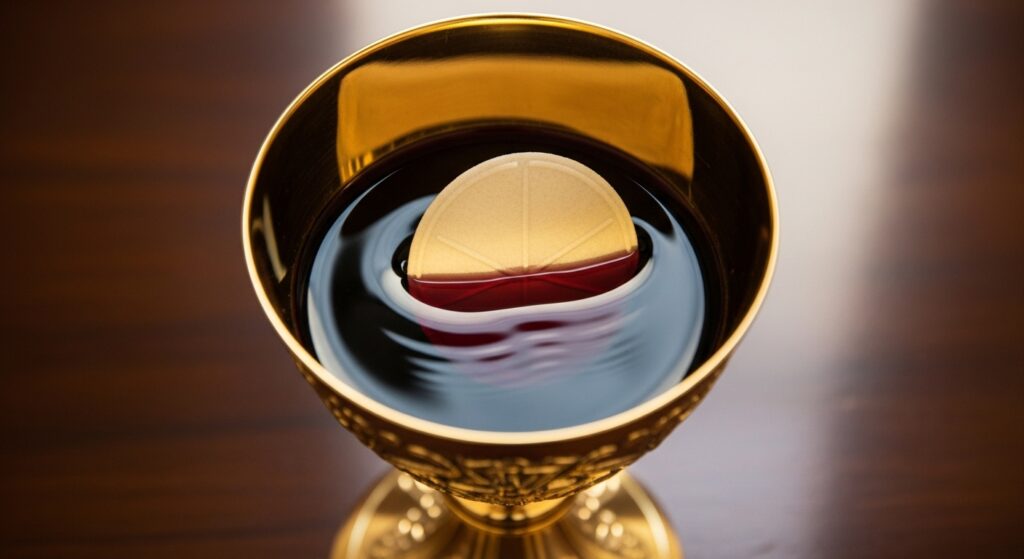The Sacred Union: Why the Priest Dips the Host into the Chalice During Mass
In the heart of every Catholic Mass, there are moments of profound symbolism that speak volumes about our faith. One such moment, often performed quietly and with great reverence, occurs just before Holy Communion. After the “Lamb of God” is recited, the priest breaks a small piece of the consecrated host and places it into the chalice containing the consecrated wine.

This sacred action, known as the commingling or fraction rite, is far more than a simple gesture. Rooted deeply in Roman Catholic theology and tradition, it is a powerful symbolic act that encapsulates the mystery of Christ’s death and glorious Resurrection.
The Meaning of the Commingling
This seemingly small act is rich with meaning, centered on three core concepts:
1. The Unity of Christ’s Body and Blood During the Consecration, the bread and wine become the Body and Blood of Christ, respectively. In a liturgical sense, they are presented as separate “species,” which symbolizes Christ’s death on the cross when His blood was separated from His body. By reuniting a piece of the host with the Precious Blood in the chalice, the commingling symbolizes the reunification of Christ’s body and blood in His resurrected, glorious state. It proclaims that Christ is no longer dead and separated, but whole, alive, and eternally present.
2. A Symbol of the Resurrection The commingling is a powerful theological statement about the Resurrection. The death of Christ involved the separation of His soul from His body and the separation of His blood from His body. The Resurrection is the reunion of all these elements, bringing forth the Risen Christ. The commingling, therefore, is a beautiful and quiet liturgical representation of Easter morning—Christ’s victory over death and His triumphant return to life.
3. The Unity of the Church Beyond its central focus on Christ, the commingling also speaks to the unity of the faithful. As we receive the one Body and one Blood of Christ, we are all brought into communion with Him and with one another. This act at the altar serves as a visible reminder that we, the diverse members of the Church, are made one in Christ through the Eucharist.
When and How It Happens
The commingling takes place after the “Lamb of God” has been recited or sung. The priest, after breaking the host, quietly places a small particle into the chalice. As he does so, he may pray a silent prayer of profound significance: “May this commingling of the Body and Blood of our Lord Jesus Christ bring eternal life to us who receive it.”
In the Roman Catholic Mass, the commingling is performed by the priest as a solemn act at the altar. While in some Eastern Rites this is the standard method for distributing Communion to the faithful, in our rite, it is a symbolic action that prepares the gifts for our reception.
In conclusion, the simple, quiet act of the commingling is a profound theological statement woven into the fabric of the Mass. It is a moment of deep reverence that reminds us that the Eucharist we receive is not a symbol of a dead Christ, but the living, glorious, and resurrected Christ who triumphs over sin and death, offering us the promise of eternal life.
